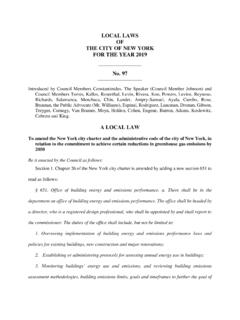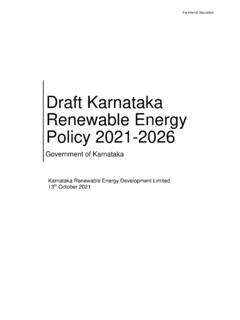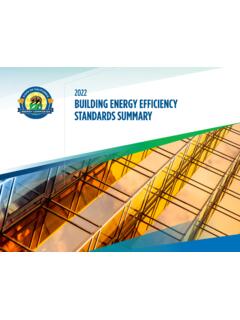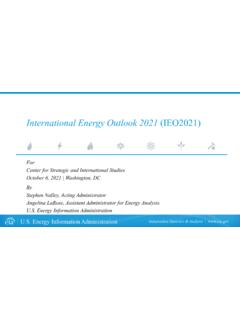Transcription of Vehicle-to-Grid (V2G) Power Flow Regulations and Building ...
1 INL/EXT-12-26853. Vehicle-to-Grid (V2G). Power Flow Regulations and Building Codes Review by the AVTA. Adrene Briones James Francfort Paul Heitmann Michael Schey Steven Schey John Smart September 2012. The INL is a Department of Energy National Laboratory operated by Battelle Energy Alliance DISCLAIMER. This information was prepared as an account of work sponsored by an agency of the Government. Neither the Government nor any agency thereof, nor any of their employees, makes any warranty, expressed or implied, or assumes any legal liability or responsibility for the accuracy, completeness, or usefulness, of any information, apparatus, product, or process disclosed, or represents that its use would not infringe privately owned rights.
2 References herein to any specific commercial product, process, or service by trade name, trade mark, manufacturer, or otherwise, does not necessarily constitute or imply its endorsement, recommendation, or favoring by the Government or any agency thereof. The views and opinions of authors expressed herein do not necessarily state or reflect those of the Government or any agency thereof. INL/EXT-12-26853. Vehicle-to-Grid (V2G) Power Flow Adrene Brionesa James Francfortb Paul Heitmanna Michael Scheya Steven Scheya John Smartb September 2012.
3 Idaho National Laboratory Idaho Falls, Idaho 83415. Prepared for the Department of Energy Office of Nuclear Energy Under DOE Idaho Operations Office Contract DE-AC07-05ID14517. a ECOtality North America b Idaho National Laboratory EXECUTIVE SUMMARY. The current availability of plug-in electric vehicles (PEVs), and their projected penetration of the private transportation market in the coming years, introduces the possibility of feeding the energy stored in vehicle batteries back to the electrical grid. This energy storage potential supports the objective of possibly providing additional financial incentives and opportunities for the PEV.
4 Owner and by supporting emissions reduction by facilitating renewable energy integration and electric grid stability. The Idaho National Laboratory (INL) and ECOtality North America (ECOtality) conducted a study of governmental Regulations and Building code requirements impacting the introduction and use of vehicles with Vehicle-to-Grid (V2G) capability which could influence future activities to: Develop a common set of Regulations , standards, and Building codes that would apply in broad geographic areas that would allow for widespread use of V2G vehicles Identify Regulations , standards, and Building codes requiring modification to allow for a single, national regulatory framework.
5 This project was divided into the following three phases: Phase 1 Potential V2G Operating Modes and Functionality Phase 2 Existing Codes, Regulations , and Business Models Phase 3 Requirements for a Common Set of Regulations , Standards, and Codes All three phases are summarized in this report. Phase 1 provides the background for V2G systems so that a full understanding of the issues can be obtained. There are three basic system components involved that define the environment for recharging a vehicle or discharging energy from the vehicle to the electrical grid: (1) the location where the vehicle connects with the electrical grid, (2) the electric vehicle supply equipment to which the vehicle connects, and (3) the electric vehicle (or more specifically the battery management system) that manages the energy storage system state of charge.
6 Various PEV configurations and charger levels will impact V2G potential. Different segments of the market ( , utilities, fleets, or general consumer) will be motivated by different incentives, including grid reliability, monetary payments, and emissions reductions. To realize the benefits that motivate customers, the industry first must address impacts ( , energy storage system life and warranty) and operational issues ( , ease of use, software programming, and automation). Phase 2 includes an assessment of the existing codes and standards in several metropolitan areas as they relate to V2G to identify commonalities or conflicts.
7 Local utility and codes experts were surveyed in Phoenix, Orlando, Boston, Detroit, Raleigh, Maui, San Diego, Dallas, Seattle, Portland, New York, and Washington The local contacts were queried on topics such as regulatory barriers (identifying the designated authority having jurisdiction and the version of the National Electric Code that is adopted locally), the electric utility ii environment (whether the local electric utility electric service rules address V2G, electric vehicles, and renewable energy), implementation barriers (permitting and testing issues), and market barriers (incentives such as feed-in-tariff programs or time-of-use rates).
8 A summary of findings is presented in Table E1. With the structure of local government control and the number of electric utilities reaching over 3,000 in the United States, there are variations to the way that resources are connected to the grid. Although codes and standards specific to V2G have yet to be developed, it is assumed that the same variation will be encountered on a local level and present implementation challenges to companies in the industry. Phase 3 provides recommendations relating to a set of Regulations , standards, and codes that would allow for widespread use of V2G operations.
9 In an ideal world, codes and standards would be the same in every target implementation region for V2G. In actuality, there are many nuances that will cause challenges for customers and vendors. Moving forward, authorities having jurisdiction and electric utilities should be encouraged to share best practices and information with other agencies in order to work toward common practices and quick adoption of nationally approved standards. The vehicles and electric vehicle supply equipment will be mostly standardized through the Society of Automotive Engineers proceedings and regulatory areas that the automotive manufacturers must follow.
10 It is recommended that local authorities having jurisdiction and electric utilities follow the National Institute of Standards and Technology, Institute of Electrical and Electronics Engineers, and Society of Automotive Engineers proceedings and participate in standards development when feasible to understand and follow the guidelines that will support V2G technology. Also, authorities having jurisdiction and electric utilities should take care in preparing any customer- facing programs and language as more and more connected resources are moving from commercial entities to everyday consumers.



















